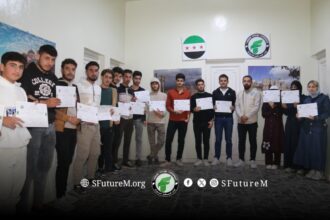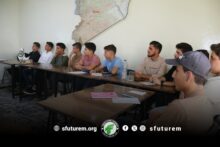Slow Demographic Change: Bab al-Sqa Camp as a Model

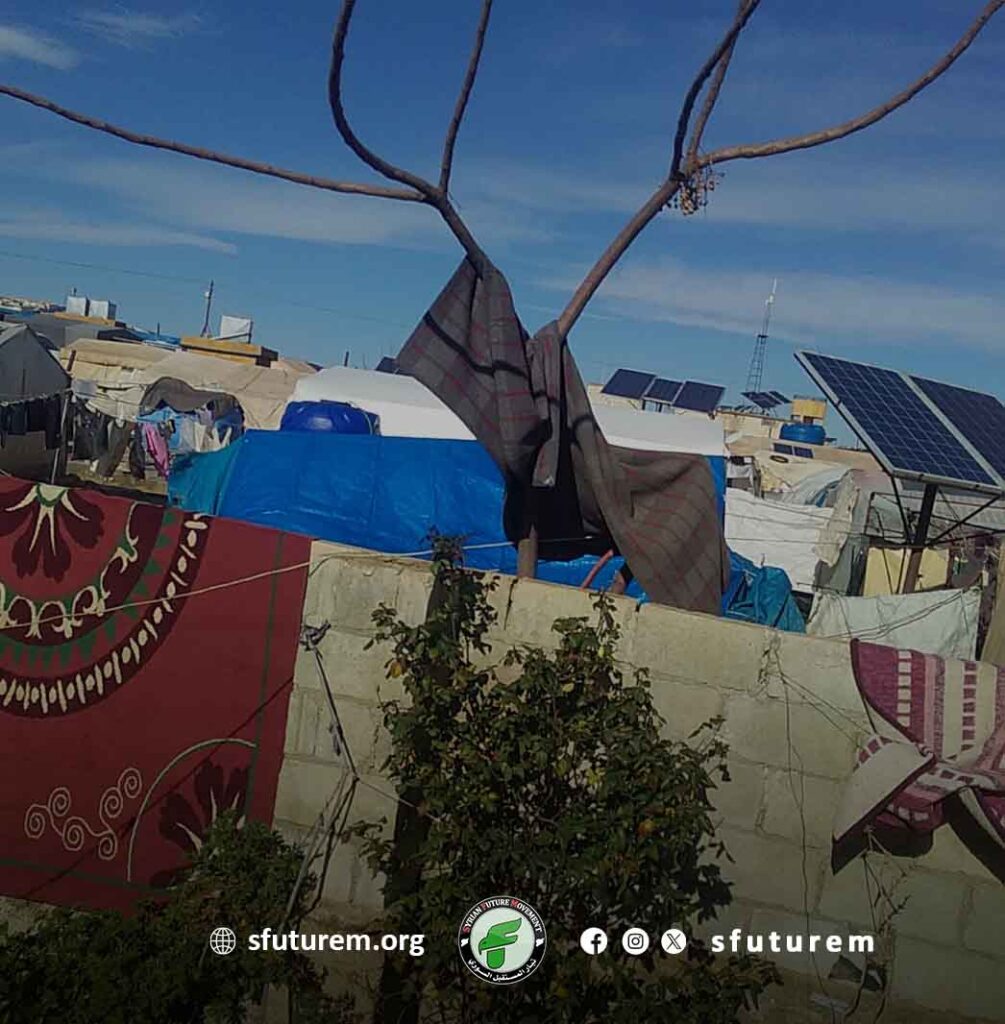
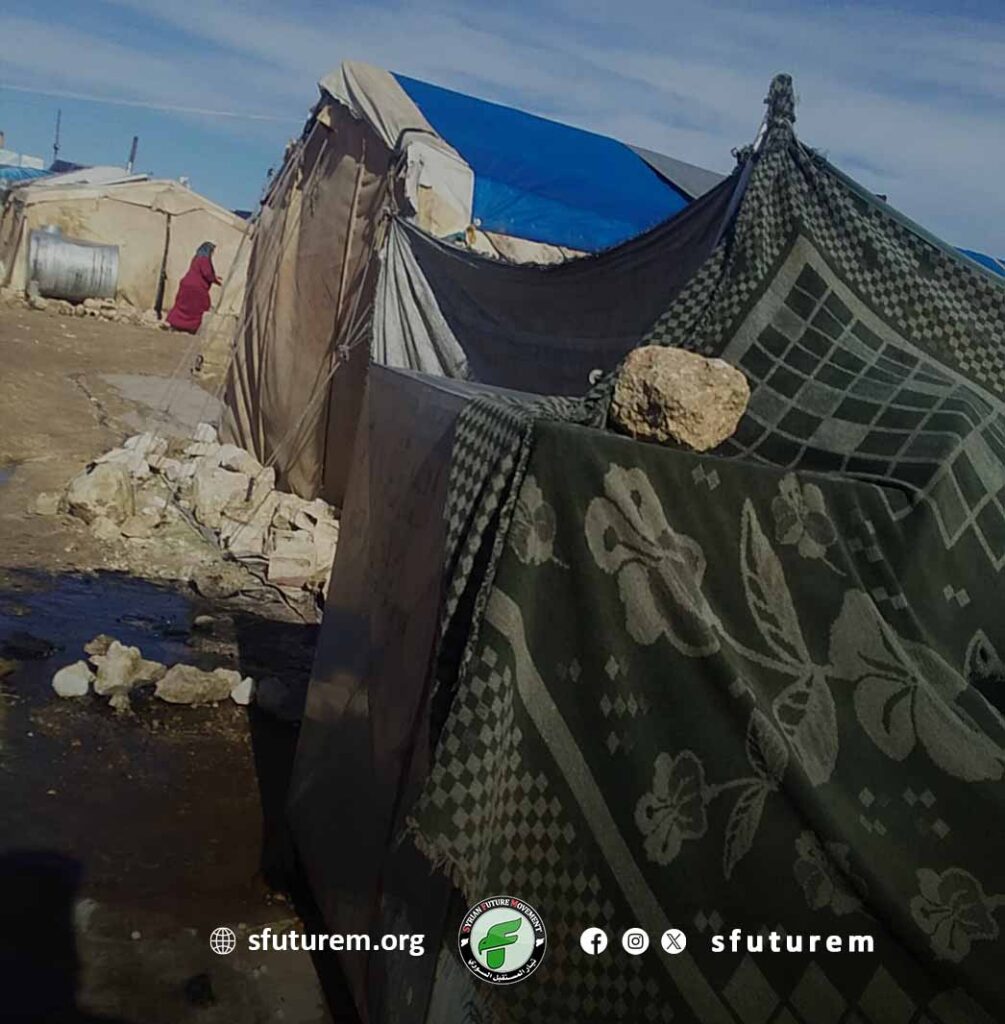
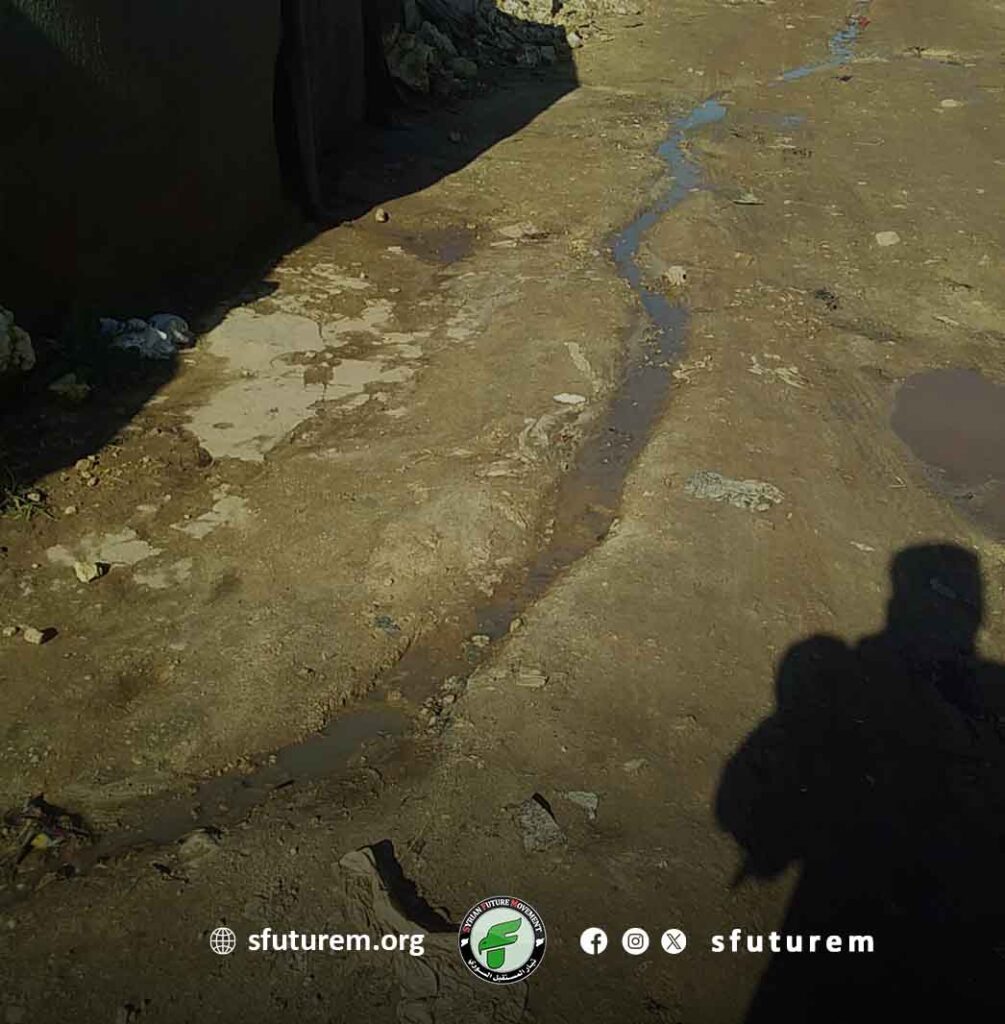
According to the “Response Coordination Team” in northern Syria, the number of Syrian IDPs has reached about 2.1 million, out of more than 4 million Syrians living in Syrian opposition areas. Meanwhile, the number of people living in camps is 1,043,869, residing in 1,293 camps, including 282 makeshift camps set up on agricultural land, receiving no international humanitarian support or aid.
According to a field study conducted by our team inside Syria, the reasons for the displaced Syrians living in camps are manifold:
1- Fear of the Syrian regime and its militias taking control of their towns and villages, forcing them to choose a miserable life in a tent over the authority of the Syrian regime, which employs a policy of terror and revenge against the locals and civilians.
2- Lack of financial capacity to purchase or rent homes in relatively safe villages and towns.
3- Hope for sustainable residential construction instead of temporary tents, making the camp a small village similar to Palestinian camps in Syria and Lebanon.
4- The presence of some relief aids that help the weak families to survive, especially with almost no job opportunities in northern Syria.
5- Choosing the camp provides a relative safety from military aggression by the Syrian army and its militias, Russia, and Iran.
Resettlement Aimed at Intended Demographic Change:
While the number of camps exceeds 1,000, the military policies of different conflict parties are deliberately aimed at a structural demographic change of the Syrian people by displacing the original inhabitants and adapting them to their new areas, aiming for future settlement and perpetuation.
The Syrian regime aims for Syrians in its areas to be “homogeneous,” as described by the head of the regime. Hence, displacing Syrians not under its control is an urgent need for maintaining its authority. Iran seeks popular infiltration through the policy of political Shi’ism and spreading its culture, taking over vital areas, especially in the eastern region near the Iraqi border, giving it access to the Mediterranean Sea and Lebanon, in addition to the city of Aleppo, a historical site of Shiite Hamdanid rule, and what Aleppo symbolizes for Iran’s Shiite political identity.
Turkey aims to create an Arab societal structure along its border to sever the connection between the Kurds in Syria and the Kurdistan Workers’ Party, hence interested in relocating Arab Syrians to areas under its gradual guardianship.
Hence, we can consider an agreement between the conflict parties on the issue of continuing demographic change, directing it towards the strategic demographic interests of the parties involved in the Syrian matter.
“Babsqa Camp” as a Model
In a field study conducted by the Syrian Future Movement team in a makeshift camp in the Babsqa area, located in northern Syria in Idlib province, close to the Syrian-Turkish border and near Bab al-Hawa from the west, the findings were as follows:
- We found a spread of some necessary and vital services in the camp, including a grocery store, a butcher shop, and other life essentials.
- All individuals in the camp are from rural Idlib, displaced from (Ma’arrat al-Nu’man, Hayish, Ain Laroz, Jarada, Kafr Nabl, Hass, etc.).
- Water is transported to the camp via water tankers, some of which are supported by civil relief organizations.
- Solar panels were installed for all tents individually, making the prospect of electricity for the camp a feasible future project.
- Most of the camp relies on fabric, donated by some relief organizations, and the rest is paid for by the displaced themselves, with some houses made by their owners erecting concrete walls and roofs made of thick fabric “Jader.”
- Most camp residents, other than those working in the camp, rely on work in villages and areas outside the camp, with “Al-Dana” village in Idlib province being a work destination for most camp residents due to its geographical proximity and accessibility by “motor” vehicles.
- The camp consists of about fifty tents, housing approximately 250 families, nearly a thousand displaced people residing in the camp. The count could not be accurately documented and is based on rough estimates by inquiring some of the displaced there.
- The camp’s inhabitants await efforts by humanitarian organizations to build concrete blocks instead of fabric tents, similar to other camps (“Mashhad Rouhin Camp,” for example). Although there are many camps, intermittent rumors are spread to the displaced in the “Babsqa” camp about the arrival of a relief organization to build concrete structures.
- Primitive channels run from the tents, along the road, down to a large pit where water is collected. This water comes from washing, bathing, or dishwashing. The large pit, called “Jurat Fanniya,” is the culmination of collecting this water and the output of shared and individual toilets. Some relief organizations periodically contribute to cleaning these pits “Al-Jur Al-Fanniya.” Despite this dire situation, the displaced managed to forcibly adapt, awaiting some work or food aid.
We encourage donors and philanthropists to assist this camp and others, and we can connect them with some of the displaced families we have met and were impressed by their national, political, religious, and ethical awareness.
Permanent Situation:
As indicated, the camps in northern Syria have become a strategic interest for all parties to the conflict. Therefore, we can enumerate the deficiencies for permanent residence as follows:
- Drawing electricity, although people have adapted to solar panels as a cheaper alternative to official electricity or “generators” (subscription-based electricity), and this can be replaced by building a solar energy project near the camp, making it free through a well-studied and adequate rationing program to preserve this energy.
- Drawing water either by drilling wells or by transporting it from nearby villages.
- Transforming fabric tents into concrete houses.
- Paving roads and preparing infrastructure.
According to our study, there was a consensus among those asked that residence in the camp would be permanent if these four additions were provided, even if a permanent solution to the Syrian issue is reached and it becomes possible to return to their original areas! According to the conviction of the camp’s inhabitants, most of their original areas would need costly reconstruction after the war, and the return might be over long periods, even if real reconstruction occurs. The study does not rule out the possibility of the camp becoming an alternative or secondary area to the original area.
Conclusion:
The decision regarding demographic change surpasses the mere defense of the Syrian people against themselves, as it seems. Hence, we are confronted with a scenario of adapting to the decisions made by the conflicting parties concerning demographic change, which they have significantly succeeded in implementing, even before the transfer of the green buses transporting people! It doesn’t seem likely that this will change in the near future.
Therefore, we in the Syrian Future Movement (SFM) recommend aiding in making the camps habitable until a genuine political resolution is reached. Then, the decision to stay or return to their original area should belong to the displaced themselves, based on the extent of destruction, the issue of reconstruction, and the highly complicated social situation.
We also advise fighting against demographic change by all national political forces in various Syrian political realms, or at least attempting to alleviate its consequences.
The Syrian Future Movement, while regretting the condition the Syrian people have reached concerning the issue of camps and demographic change, insists on the necessity of arriving at an all-encompassing political solution. This, in turn, may grant Syrians a new phase that might permit them to live healthily, even if the project of demographic change is fully implemented!!
Ibrahim Mustafa
Ammar Al-Amouri
and others
Scientific Office
Research and Studies Department
Articles
Syrian Future Movement (SFM)

